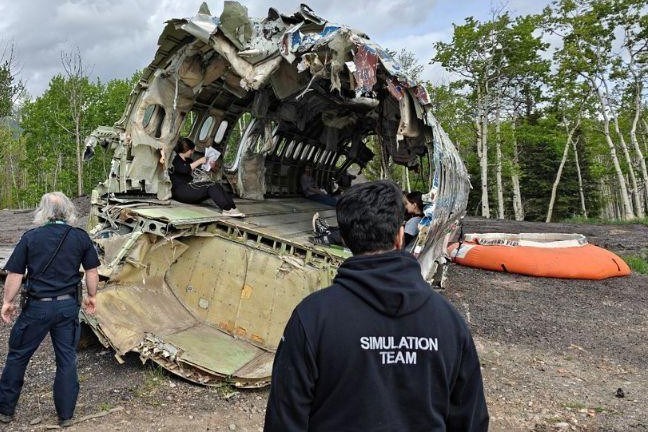One of the largest training exercises in Northern BC was recently conducted in Smithers.
This exercise was designed to help first responders from across the region prepare for a mass casualty scenario, otherwise known as a "code orange."
The scenario on May 23 involved first responders and other health agencies responding to a full-scale simulation of a crashed airplane. It was hosted at two key sites — the Smithers Regional Airport and the Bulkley Valley District Hospital.
The exercise included simulated triage and extrication to the Bulkley Valley Hospital and dealing with wreckage from the crash, including complications involving a hazardous fuel spill.
This exercise involved 23 different agencies, including first responders from the Smithers Fire Department, RCMP, BC Ambulance Services, Canadian Rangers, search and rescue teams, and emergency operations representatives from Telkwa, Witset, and Houston.
More than 218 participants were involved in the simulation. These included the "victims," who were mostly healthcare students from a high school program run at Coast Mountain College.
The students were dressed with moderate to severe injuries using special effects makeup, including severe trauma and amputated limbs.
Among these participants were also simulated family members who tried to breach security around the crash site to reach loved ones, simulated reporters who showed up at the hospital where the "victims" were being treated, and even simulated social media and newscasting reports that were broadcast to the team at the crash site.
In addition, a local helicopter company, Silver King Helicopter, donated more than $2,000 worth of flight hours to train coordination, bringing in Canadian Rangers and training in communication and coordination with air rescue services.
Matt Herzog, deputy fire chief for Smithers Fire Rescue and director for Emergency Support Services, spoke to The Citizen about the importance of preparing for situations like this.
“These events can happen anywhere,” said Herzog. “You can have a tour bus that rolls over or a school bus that is involved in an incident. You could have an aircraft come into your community and there's an emergency and possibly has to crash. You just never know when a code orange could happen, regardless of the size of your community…
“We chose an aircraft emergency this time, and maybe next time we will choose a bus accident or some other type of emergency. But these are very important to practice for — our firefighters, our rangers, search and rescue responders, and paramedics can practice working together. Because we're a smaller area, we're going to call everyone to help.”
One of the key pieces in the exercise was the simulated wreckage of a DC-9 aircraft, which was previously used in the film The Grey.
“The movie was filmed in Smithers and when they finished the movie, the two mid-sections — the movie crew and the company didn’t want to take it back to Vancouver or California,” said Herzog. “They donated it to the Smithers Volunteer Firefighters Association for a dollar, so now it lives with us. So it’s spent a long time not being used, and now we’re looking at facilitating more aircraft emergency firefighting training and more code orange training. So it’s an amazing prop to have for us, and it will be used for a long time.”
In his interview with The Citizen, Herzog emphasized that a key training point of this simulation was focusing on coordination and triage.
“We wanted to hone in on our communication skills between the emergency operation centre, the hospital, and the incident command post,” said Herzog. “That’s three-way communication, determining what information is relevant and what is not relevant. We wanted to focus on those extrication skills for our on-the-ground first responders and our triage.
“Triaging is a very particular skill that requires practice and regular training to stay on top of. It’s not just the same as doing a regular patient assessment. There’s a different type of assessment model that you use for triage. Getting our paramedics, firefighters, and search and rescue responders to focus on that and practice — that’s important.”
With a key focus on medical applications and communication skills, Herzog also said that he hopes participants and first responders gain familiarity and closeness through these simulations.
“The big takeaway that I hope everyone got from it was friendship,” said Herzog. “Particularly in the smaller communities, that’s what it takes to make these real-world events happen. When we have a real emergency, it’s important that we all know each other, we all know how to work together, and we all know what our objectives are when that mission drops. I think that is the biggest takeaway from all this. There are so many different lessons, but it’s that friendship between responders, friendship between health authorities, and local government staff.”



